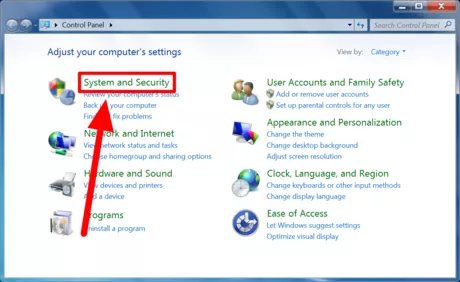
In the realm of Windows 7, keeping your operating system up-to-date is essential for maintaining security, stability, and performance. Windows Update serves as the cornerstone of this endeavor, providing a centralized mechanism for delivering patches, updates, and enhancements to the Windows operating system and associated software. In this extensive guide, we will embark on a journey to demystify Windows Update, exploring its myriad features and functionalities to empower users with the knowledge and tools needed to ensure their Windows 7 systems remain secure and optimized.
Understanding Windows Update:
Before delving into the intricacies of using Windows Update, it’s crucial to grasp its fundamental purpose and significance:
- Definition: Windows Update is a service provided by Microsoft that delivers updates, patches, and drivers to Windows operating systems and associated software. It ensures that users have access to the latest security fixes, performance improvements, and feature enhancements.
- Security Updates: One of the primary functions of Windows Update is to deliver security updates that address vulnerabilities and protect systems from malware, exploits, and other threats. Regularly installing security updates is essential for safeguarding your Windows 7 system against cyber attacks.
- Quality and Reliability Updates: In addition to security updates, Windows Update delivers quality and reliability updates that address issues related to system stability, compatibility, and performance. These updates help ensure that your Windows 7 system functions smoothly and efficiently.
Using Windows Update:
Now, let’s explore the step-by-step process of using Windows Update to keep your Windows 7 system up-to-date:
- Accessing Windows Update:
- Click on the Start button in the taskbar.
- Navigate to “Control Panel” > “System and Security” > “Windows Update.”
- Alternatively, you can access Windows Update directly from the Start menu by typing “Windows Update” in the search box.
- Checking for Updates:
- In the Windows Update window, click on the “Check for updates” button. Windows will scan for available updates and display them in the update list.
- Reviewing Available Updates:
- Once the scan is complete, Windows Update will display a list of available updates, categorized by type (e.g., important updates, recommended updates, optional updates).
- Review the list of updates and select the ones you want to install. You can also click on individual updates to view more information about them.
- Installing Updates:
- After selecting the updates you want to install, click on the “Install updates” button. Windows will download and install the selected updates automatically.
- Depending on the size and number of updates, this process may take some time. It’s essential to be patient and allow Windows Update to complete the installation process.
- Restarting Your Computer:
- In some cases, Windows Update may require you to restart your computer to complete the installation of certain updates. If prompted, click on the “Restart now” button to restart your computer immediately. Alternatively, you can choose to restart later.
- Configuring Automatic Updates:
- To ensure that your Windows 7 system stays up-to-date automatically, you can configure Windows Update to download and install updates automatically.
- In the Windows Update window, click on the “Change settings” link in the left-hand pane. From here, you can choose whether to install updates automatically or manually, as well as specify the time and frequency of automatic updates.
Advanced Features and Tips:
To make the most of Windows Update and ensure optimal system performance and security, consider the following advanced features and tips:
- Microsoft Update: Enable Microsoft Update to receive updates for other Microsoft products installed on your system, such as Microsoft Office, Microsoft Edge, and Microsoft Exchange Server. Click on the “Find out more” link in the Windows Update window to access Microsoft Update.
- Driver Updates: In addition to updates for Windows operating system components, Windows Update also delivers driver updates for hardware devices connected to your system. Ensure that you install driver updates to keep your hardware drivers up-to-date and compatible with the latest Windows 7 updates.
- Optional Updates: Periodically check for optional updates in Windows Update, as these updates may include new features, performance improvements, and compatibility fixes for your system. Click on the “Optional updates are available” link in the Windows Update window to view and install optional updates.
- Troubleshooting Windows Update: If you encounter issues with Windows Update, such as error messages or failed updates, use the Windows Update troubleshooter to diagnose and resolve the problem. Click on the “Troubleshoot problems” link in the Windows Update window to access the Windows Update troubleshooter.
Conclusion:
Windows Update is a critical component of maintaining a secure, stable, and efficient Windows 7 system. By following the comprehensive guide outlined above, users can leverage the power of Windows Update to keep their systems up-to-date with the latest security patches, performance improvements, and feature enhancements. Whether it’s checking for updates, installing critical security fixes, or configuring automatic updates, Windows Update provides the tools and functionality needed to ensure the longevity and reliability of your Windows 7 experience. So take control of your system’s destiny today, embrace the power of Windows Update, and embark on a journey to a safer, more secure computing environment.